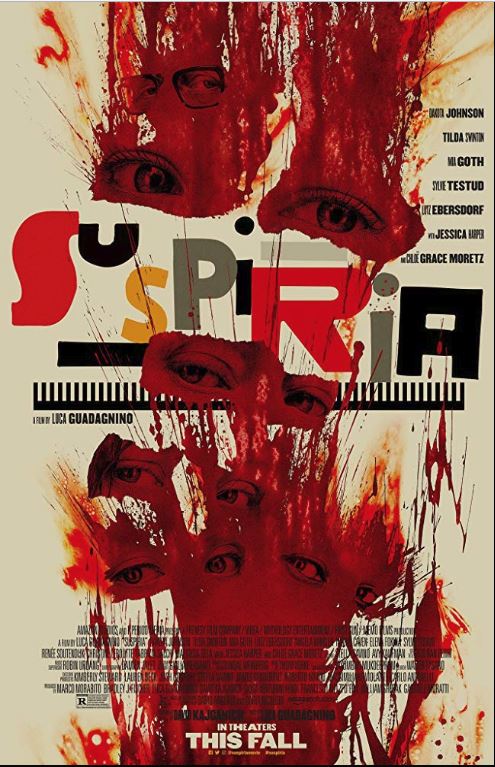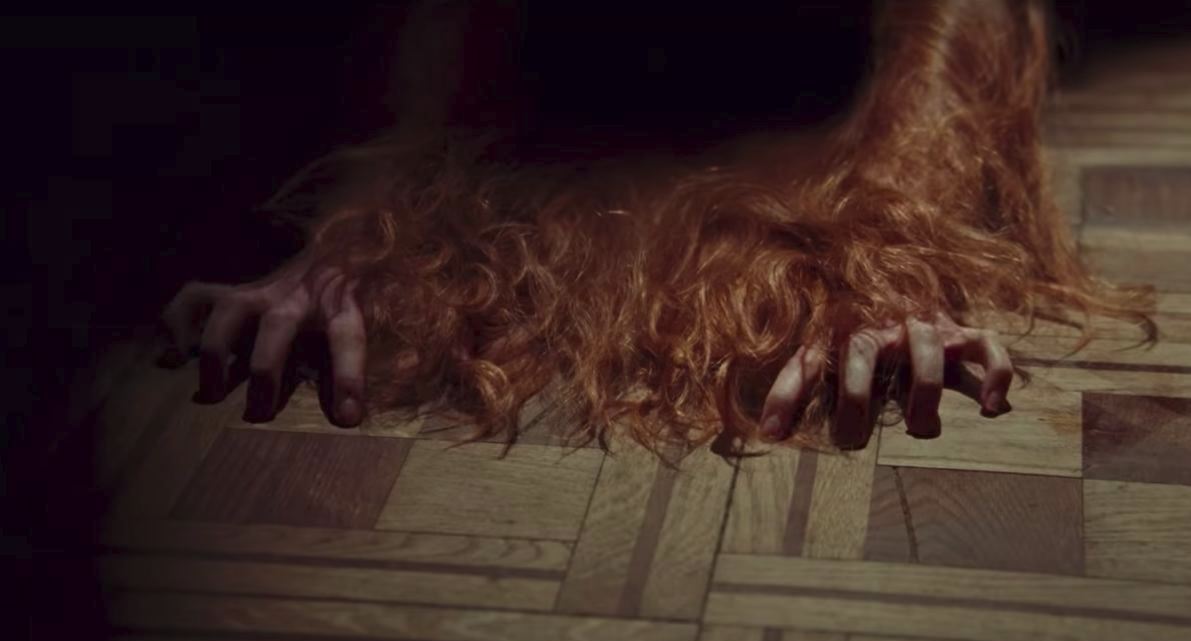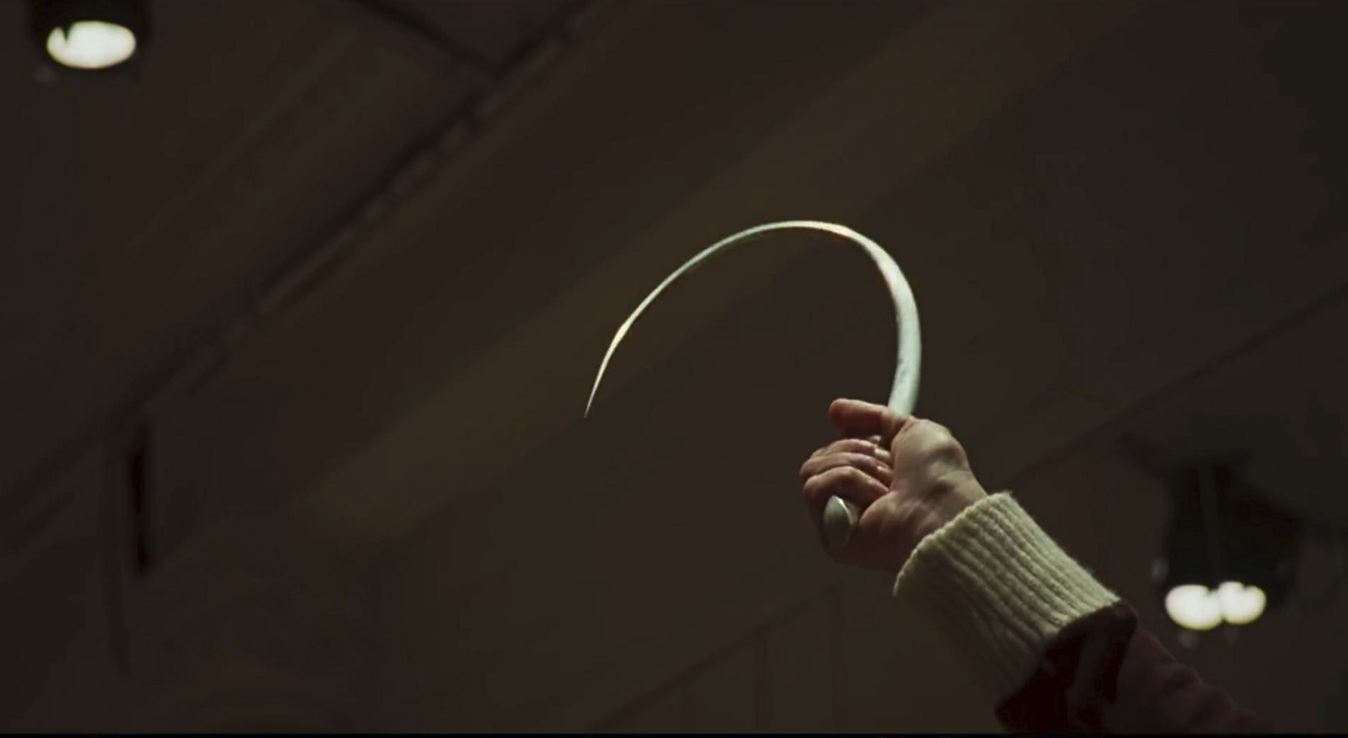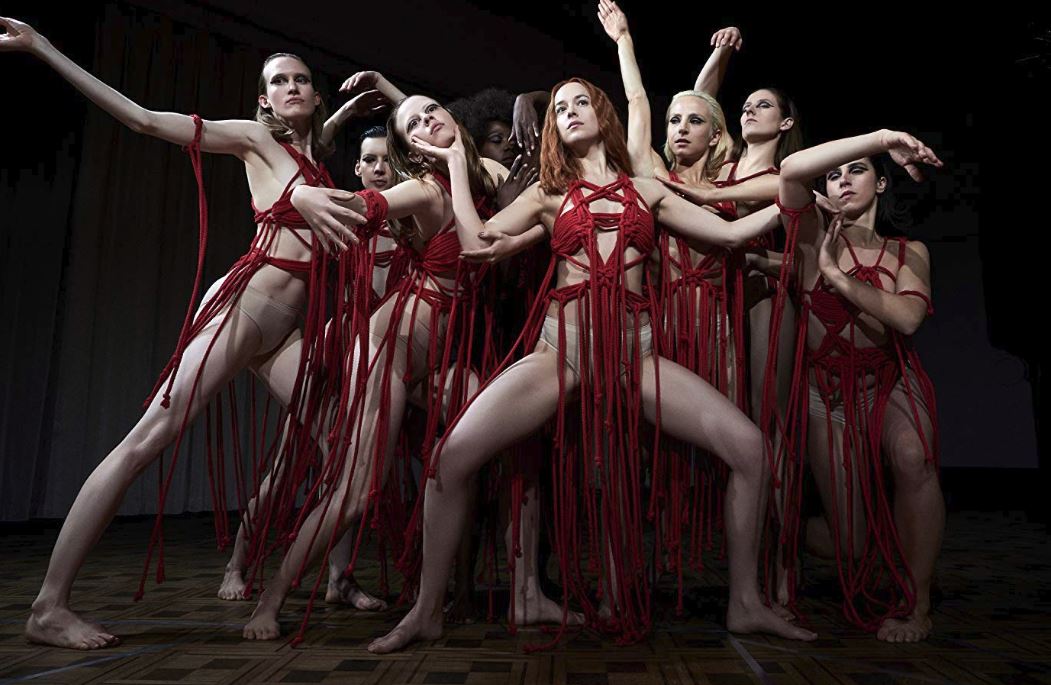
Luca Guadagnino’s SUSPIRIA could not have been made in America, and for that reason alone, I feel like I should like it. Aside from being completely arty, no American producer would ever set a movie in Berlin during the Baader Meinhof standoff and expect anyone to know what they were talking about (to be honest, I still don’t get what it has to do with the movie, but whatever), or have their protagonist be, for some reason, a transplanted American Mennonite in Berlin. But here we are.

Ambitious young dancer Susie Bannion (Dakota Johnson) arrives at a dance school in West Berlin in 1977, where she is taken under the wing of the legendary Madame Blanc (Tilda Swinton), an Isadora Duncan/Martha Grahame-esque pioneer of modern dance whose masterwork, VOLK, was what impelled Susie to her dance career in the first place. It soon becomes clear that there is something dark and sinister in this school, and that the women who run it are more than a group of dancers. They’re a coven of witches.

In look and feel, SUSPIRIA owes a lot more to movies like Bertolucci’s THE CONFORMIST or the work of Rainer Werner Fassbinder than it does to Argento’s blood-soaked giallo. The women at this school speak a mishmash of German, French and English, cook pots of stuff on the stove, and in their modern dance, invoke some truly awe-inspiring, terrifying, bloody, and sexual witchery. Even English folk horror gets a nod here, in the drum-and-tambourine inflected score by Radiohead’s Thom Yorke. Guadagnino’s witches are summoning up something very deep, old and specifically European.

They are also summoning up something very contemporary, which is male anxiety in the “Me Too” era. And I think the film really needs to be read in that context, more than as a success or failure as a “feminist” piece, because it’s not, really. It’s about how scared men are of the idea of women getting together. When they’re not dancing or dreaming, these witches are organized. They take votes. They go out to dinner together. When male police officers come to investigate them, they hypnotize them, strip their pants off, and laugh at their penises. In fact, when their final whatever-it-is needs a witness, they go out and get the male psychologist to watch them, because apparently, that’s something they need? For some reason? Then when they’re done, the woman who I’m pretty sure starred in a few Fassbinder films (who to me was the most relatable one) takes the psychologist outside, and basically reassures him that everything is okay. Because apparently, the most important thing in the movie is this guy’s comfort. Even the head of the coven actually goes to his house and apologizes for what “her daughters” have done. I’m not sure why she doesn’t feel the need to apologize to the three or four women whose broken, twisted bodies are still in the basement of the school. But neither she nor the psychologist seems to give them a second thought.

The dance sequences are absolutely mesmerizing and visually stunning – an overload of seething, Hieronymous Bosch-like insanity, that grabs you by the throat and makes you catch your breath. Tilda Swinton is amazing, as always – bringing a necessary touch of humanity and sympathy to the role of Madame Blanc, and also appearing as the 80 year old Dr. Jozef Klemperer, whose romantic subplot is one of the highlights of the movie. But all of the women are ciphers within the collective terror of the coven. They are beautiful, they are terrible, but other than Tilda Swinton, they are not really human. I think I still prefer the less talky and more atmospheric Argento movie.
-Roni Rampant
